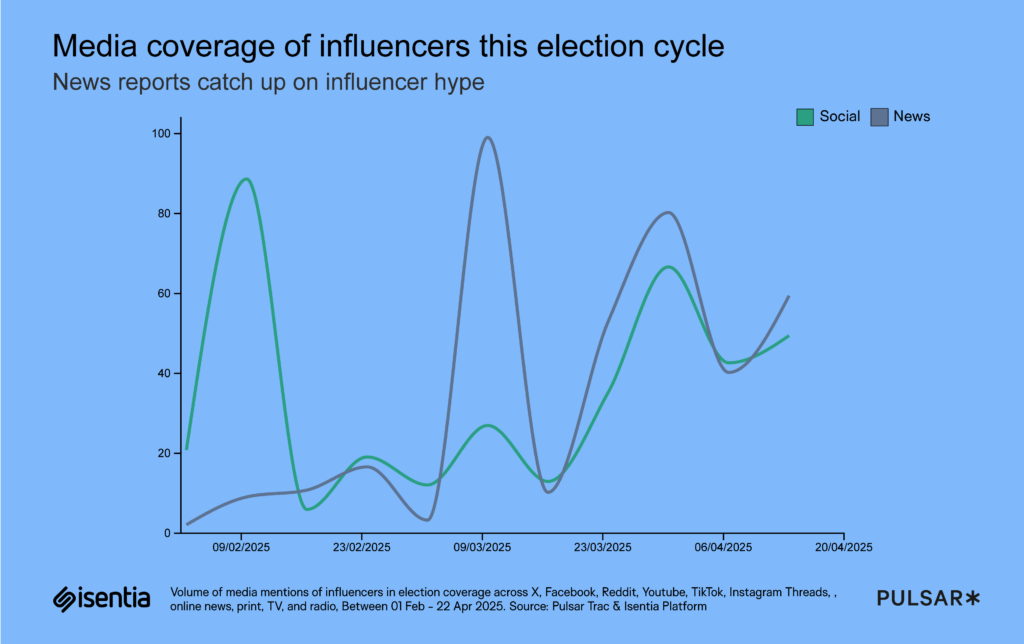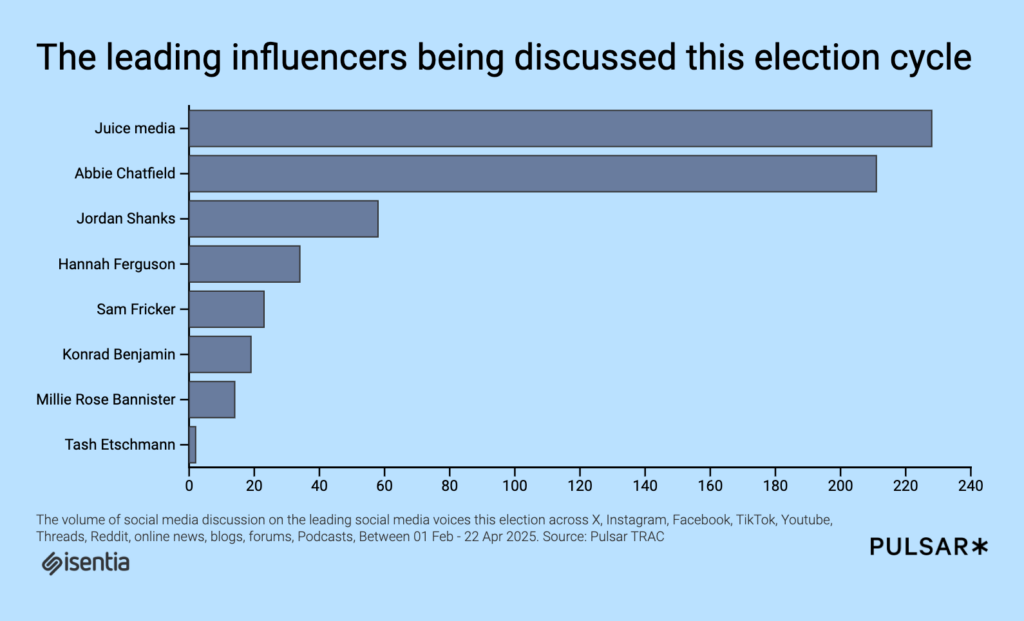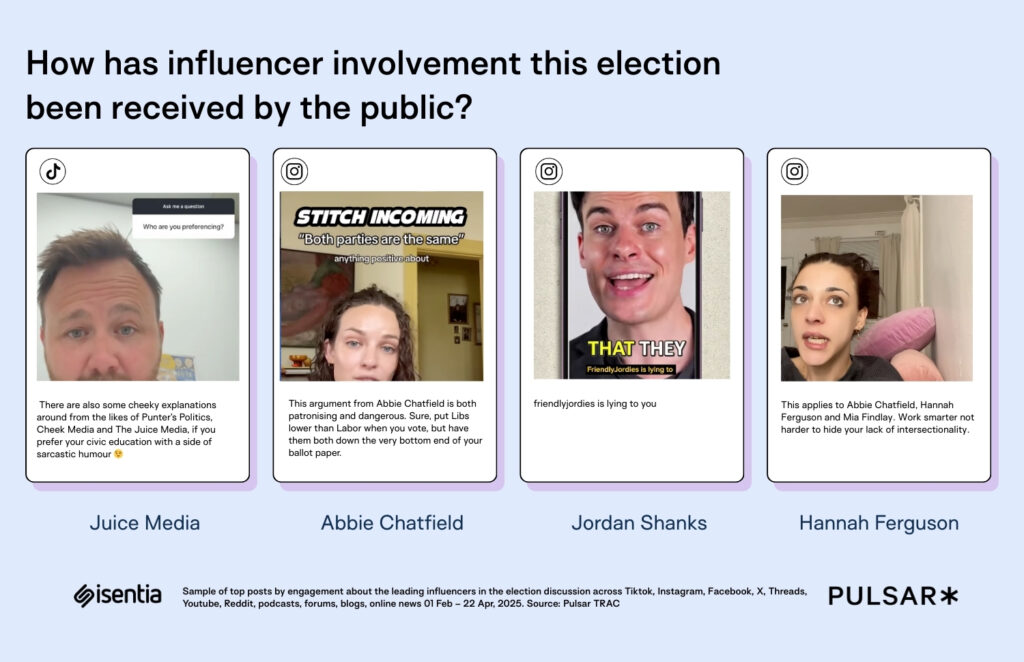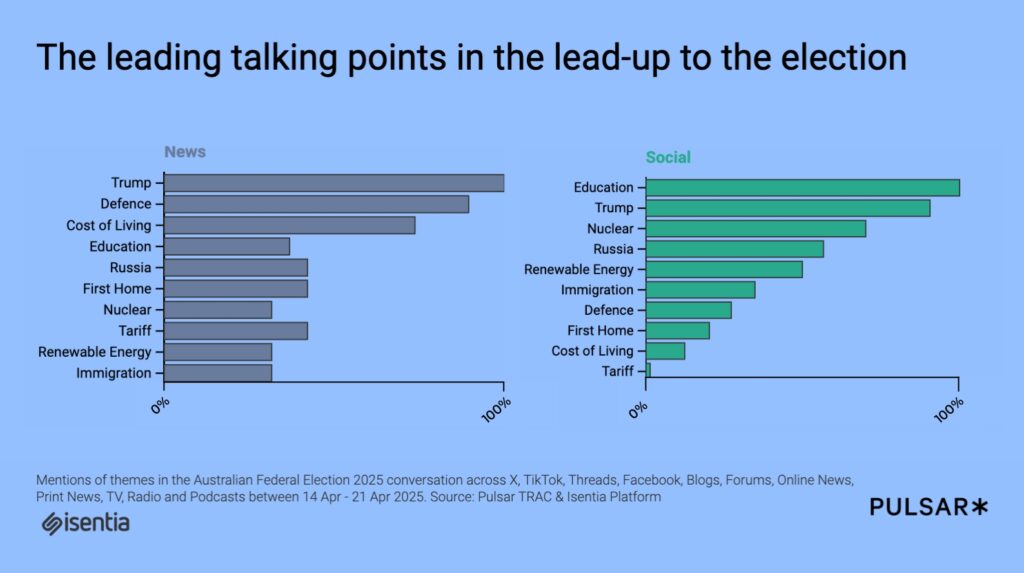Blog
5 reasons why a headline goes viral
A headline might be a reader’s first – and only – contact with a brand, and many will keep skimming until they land on something that takes their interest.
The Internet is saturated with content.
Content creators should strive to drive virality to emerge from the flood of online content. Viral content is not merely a popular piece, but it garners excessive engagement to outliers.
This paper explores some common factors of viral content.
If you would like more information about monitoring your content, get in touch with us today.
Loren is an experienced marketing professional who translates data and insights using Isentia solutions into trends and research, bringing clients closer to the benefits of audience intelligence. Loren thrives on introducing the groundbreaking ways in which data and insights can help a brand or organisation, enabling them to exceed their strategic objectives and goals.
A headline might be a reader's first – and only – contact with a brand, and many will keep skimming until they land on something that takes their interest.
If you aren't into the nitty-gritty of headlines, stop reading now. But if you want to be that content creator who writes the runaway headline, here's a snapshot of what some of the research has found.
Between 1 March and 10 May 2017, BuzzSumo analysed 100 million of the most shared article headlines on Facebook and Twitter, the platforms dominated by publisher and consumer content. Then in July, it published its analysis of 10 million B2B headlines – those shared on LinkedIn – and found that the best headline phrases, structures, numbers and lengths differed from the B2C results.
While previous research suggested that the first three and last three words were the important parts of a headline, the BuzzSumo research highlighted linking phrases as key for headlines targeting B2C audiences.
The three-word phrase – or trigram – that led the engagement charge (likes, shares, comments) was 'will make you'. In fact, on Facebook it had twice as many engagements as the trigram that took second place ('this is why'), followed by 'can we guess', 'only X in' and 'the reason is'.
BuzzSumo determined that the success of the 'will make you' phrase was based on it linking content to the emotional impact it will have on the reader – it sets you up to care ('will make you cry', 'will make you smarter', etc.).
It also found that headlines that provoke curiosity work well when readers are looking to learn something from an article. They are a little like the 'will make you' articles, but they tell you what you'll find out rather than what you'll feel.
The BuzzSumo research found that the top five phrases starting a B2C headline were:
The top five phrases ending a B2C headline were:
Admittedly, the second-place holder might not rate as well in Australia, but the five top-performing first words were:
So, what doesn't work for B2C audiences? The five worst-performing frequently used phrases were:
Confirming earlier Outbrain research, BuzzSumo found that 12 to 18 words and 80 to 95 characters had the highest engagement on Facebook.
In BuzzSumo's analysis of 10 million headlines of articles shared on LinkedIn, the practical and informative nature of how-to and list posts (see #3 below) proved to be strong performers in the top five most popular three-word phrases:
There was a clear frontrunner in the top two-word phrases starting headlines – 'How to…' was shared almost three times more on average than the second-place holder. The top two-word phrases starting B2B headings were:
Note that after the 'How to…' phrase, the next four most shared phrases were all forms of list posts, which gained more than double the average shares of ‘what’ or ‘why’ posts.
Celebrity brand names also garnered high levels of engagement. It makes sense that companies influencing the business environment and forging technological and business model innovation – like Uber, Google, Apple, Facebook, Tesla and Amazon – will have strong reader appeal. For example, nib's Ambulance or Uber: Who you gonna call?generated a lot of conversation on its Facebook page due to Uber's topicality.
At seven to 12 words, the optimum headline length for LinkedIn is much shorter than for Facebook.
In July 2017, CoSchedule founder Garrett Moon published results of an analysis that began with close to one million blog headlines – which were then put through various filters. The top takeaway was that list posts or listicles (headlines that start with a number) are "huge". Moon wrote they are "the most likely type of post to be shared 1000 or even 100 times". Interestingly, he also noted that "list posts only made up 5% of the total posts actually written".
The BuzzSumo research, confirming the power of lists and the list post format, found the six most effective numbers (in descending order) in B2C content are 10, 5, 15, 7, 20 and 6. In B2B content, the most shared numbers that start post headlines are 5, 10, 3, 7, 4 and 6, with 5 and 10 performing equally well. Note that how-to posts outstripped list posts in B2B.
CoSchedule's results show that list posts that they identified by the words 'thing', 'should' and 'reasons' – '5 things you can do…', '4 reasons why you should…' – do best on Facebook, Twitter and LinkedIn.
It's possible that this is due to a combination of clear promise (‘10 steps’, etc.) and the scannable nature of the post, where you can easily work out which bits you want to read.
While strong emotional headlines and those provoking curiosity may get you results, you need to rein in any urge to overstate.
In May 2017, Facebook announced it would demote “headlines that exaggerate the details of a story with sensational language” and those that aim “to make the story seem like a bigger deal than it really is.”
There may be some debate about what is and isn't clickbait, but there are two key points to consider. In the first place, the reader needs to feel encouraged to read. And in the second, they need to not be disappointed when they have finished reading.
There are no hard and fast rules. You always need to research what works for your audience, your topics and your social platforms, and to test your headlines. Different audiences will require different content and will be accessing it on different platforms. For example, Outbrain works for an editorial-led audience more than a business-specific audience.
In the interests of transparency, this headline isn't the first that came to mind. It's the result of trawling through this research.
Maybe we all need to take the advice of Ann Handley, chief content officer at MarketingProfs: "Spend as much time writing the headline as you do an entire blog post or social post."
Belinda Henwood, Strategy & Content
" ["post_title"]=> string(35) "5 reasons why a headline goes viral" ["post_excerpt"]=> string(159) "A headline might be a reader's first – and only – contact with a brand, and many will keep skimming until they land on something that takes their interest." ["post_status"]=> string(7) "publish" ["comment_status"]=> string(4) "open" ["ping_status"]=> string(4) "open" ["post_password"]=> string(0) "" ["post_name"]=> string(35) "5-reasons-why-a-headline-goes-viral" ["to_ping"]=> string(0) "" ["pinged"]=> string(0) "" ["post_modified"]=> string(19) "2019-06-26 00:53:19" ["post_modified_gmt"]=> string(19) "2019-06-26 00:53:19" ["post_content_filtered"]=> string(0) "" ["post_parent"]=> int(0) ["guid"]=> string(43) "https://isentiastaging.wpengine.com/?p=1842" ["menu_order"]=> int(0) ["post_type"]=> string(4) "post" ["post_mime_type"]=> string(0) "" ["comment_count"]=> string(1) "0" ["filter"]=> string(3) "raw" }A headline might be a reader’s first – and only – contact with a brand, and many will keep skimming until they land on something that takes their interest.
Is content marketing an art or a science?
It’s not a new debate but an increasingly relevant one. As technology continues to improve, the C-Suite is demanding a clearer measurement into impact. Marketing and communications professionals responsible for curating content are no longer governed by ‘gut feeling’ and instead, are increasingly driven by engagement metrics to demonstrate ROI.
These professionals are well aware how their role requires a mix of art and science thinking. They both draw from the left brain and the right brain, using data and reason to guide the creativity that fuels it.
But this relationship is less rigorously applied to content marketing – an emerging discipline that straddles both marketing and communications objectives.
Marketers and communications professionals have varying levels of social media sophistication – particularly with LinkedIn, which is often a core channel for content. With LinkedIn estimating more than 130, 000 posts are made on its newsfeed every week, organisations are increasingly turning to it as a distribution channel for thought leadership.
Far fewer, however, understand how to draw insight from the platform to ensure their content connects with their target audience.
Marketers and communications practitioners will often speak to me with this challenge solely in mind. Most are able to gauge the success of content on Facebook and Instagram to some level. Plenty of tools exist which measure various social aspects of content marketing, such as ‘likes’ or ‘shares’. But real engagement isn’t buzz. Determining whether content is connecting with a target audience is a key challenge.
Content marketers are struggling to understand whether their current LinkedIn strategy is working – whether it’s reaching the right audience and whether a piece of content is being actively engaged on the platform.
Other times, they will want to target a particular demographic; millennials for example. But they don’t have the understanding of what this group is looking for when they log onto this social networking site.
In short, what content marketers want to do is debunk the myths surrounding their own activity and drill down into strategy to make their dollars work harder.
Data is pivotal. Armed with information, marketers and communications professionals have a window into the opinions, passions and motivations of their audience.
At Isentia we’ve seen this in our own business. The Research & Insights stream has grown by 25 per cent in the last year, as this market recognises the importance of data. I’m often told by clients that they’re just at the start of their measurement journey, but still desperately rely on data to convince the C-Suite to spend money on content marketing.
Research & Insights can be used to help inform content marketing strategy by highlighting what brand-relevant topics an organisation’s audience is engaging with. It can also help content marketers understand where their brand sits against those their competitors, by measuring their share of voice on a particular topic.
But most importantly, data can help marketing and communications practitioners build out content itself. By understanding what type of content receives the most engagement on the platform, they can tailor their content strategies and measure their success at the same time.
Data is the key to debunking the myths of what does or doesn’t work in a content marketing strategy. It gives marketers and communications professionals the opportunity to ensure they understand their audience first and foremost, in order to communicate in a way that connects.
This is where science can help inform the art in content marketing.
Asha Oberoi
Head of Insights, Australia
Video content continues to rise in popularity. We have explored how marketers can connect with their video audience and drive strong engagements.
Download our whitepaper to learn more.
" ["post_title"]=> string(53) "A marketer’s guide to connect with a video audience" ["post_excerpt"]=> string(97) "Find out the importance of video content in 2019 and how you can connect with your video audience" ["post_status"]=> string(7) "publish" ["comment_status"]=> string(4) "open" ["ping_status"]=> string(4) "open" ["post_password"]=> string(0) "" ["post_name"]=> string(50) "a-marketers-guide-to-connect-with-a-video-audience" ["to_ping"]=> string(0) "" ["pinged"]=> string(0) "" ["post_modified"]=> string(19) "2023-07-07 02:41:43" ["post_modified_gmt"]=> string(19) "2023-07-07 02:41:43" ["post_content_filtered"]=> string(0) "" ["post_parent"]=> int(0) ["guid"]=> string(35) "https://isentia.wpengine.com/?p=935" ["menu_order"]=> int(0) ["post_type"]=> string(4) "post" ["post_mime_type"]=> string(0) "" ["comment_count"]=> string(1) "0" ["filter"]=> string(3) "raw" }Find out the importance of video content in 2019 and how you can connect with your video audience
With social media platforms becoming central to political engagement, figures like Abbie Chatfield, Friendlyjordies, and The Juice Media are amplifying progressive causes and challenging traditional political narratives. But how significant is their impact? Are they genuinely influencing the election conversation, or is their influence more about their ability to capture attention and drive engagement? This evolving trend raises important questions about the role of influencers in modern elections and how they are reshaping the way political messages are communicated to younger, digital-savvy voters.

As the 2025 Australian federal election nears, influencer involvement has gained attention, with social media leading the charge while news coverage initially lagged. Prime Minister Anthony Albanese and Opposition Leader Peter Dutton are tapping influencers to connect with younger voters—Albanese engages with Abbie Chatfield’s audience through values-driven storytelling, while Dutton targets young men with Sam Fricker's relatable podcasts. This reflects a broader shift from traditional media to platforms like TikTok and Instagram. Journalists are increasingly covering these influencer-driven moments, often focusing on the viral spread and political fallout. For instance, a viral February 13 video from an Israeli influencer accusing two NSW nurses of hateful comments dominated Australia’s news cycle, prompting swift political reactions. Coverage generally focuses on political responses, not the influencers themselves. This trend was also seen with Greens Leader Adam Bandt’s DJ event in Melbourne, where media noted his attempt to engage younger voters. The Australian Electoral Commission cleared Chatfield’s posts featuring Albanese and Bandt, highlighting the growing regulation of influencer political content. This focus towards viral moments over policy discussions raises questions about the impact on undecided voters and the evolving role of journalists in political engagement.

Influencers like Abbie Chatfield, The Juice Media, and Friendlyjordies are becoming central to the election rhetoric ahead of the 2025 Australian federal election. Chatfield, who faced scrutiny from the AEC, used her platform to rally support for the Greens, positioning herself against what she described as a Liberal media strategy to discredit influencers. Her posts, particularly defending her political involvement, have garnered strong support, with hashtags like #abbieisinnocent and #freeabbie dominating her comment sections. In contrast, some critics dismiss her political role, questioning her credibility. The Juice Media, known for its sarcastic takes on government policy, continues to challenge political narratives with irreverent content, resonating with younger, disillusioned voters. However, their approach also faces backlash from those who see it as too cynical or divisive. Similarly, Friendlyjordies critiques both major parties, particularly Labor’s stance on progressive issues, while encouraging followers to unite against corporate greed. His platform sparks heated debates, igniting both support and criticism.
Overall, these influencers are becoming polarising figures, amplifying political engagement while intensifying the ideological divide on social media, ultimately shaping the growing influence of social media figures in the election discourse.

Chatfield, a vocal supporter of progressive causes like Palestinian liberation and women's rights, has gained a strong following but faces criticism for oversimplifying political issues and for her perceived naivety, especially regarding preferential voting. Ferguson, who critiques colonialism and supports Palestinian liberation, is praised by supporters but criticised for lacking depth in her activism, with some accusing her of ignoring intersectionality. Friendlyjordies, known for satirical commentary, is admired for calling out political corruption, but his critics accuse him of bias towards Labor and oversimplifying complex issues. The Juice Media, using sarcasm to critique government policies, resonates with disillusioned young voters but alienates others who find their approach too cynical. These influencers contribute to a growing divide in Australian politics, mobilising progressive movements while deepening ideological rifts, as their content both challenges traditional politics and fuels polarisation.

Key issues like defence, the cost of living, and education are dominating political discourse and social media conversations. Global events, including Trump’s influence on international relations and trade, have sparked strong reactions, with Albanese facing backlash over Australia’s stance on Gaza and its defence ties with Israel. Meanwhile, Dutton’s comments on Ambassador Kevin Rudd and allegations of election interference have stirred tensions. On social media, debates over defence—highlighted by Indonesia’s denial of Russia’s military presence near Darwin—and cost of living concerns are intensifying. Education remains a key point of contrast, with Albanese’s Free TAFE policy gaining support while Dutton faces criticism for prioritising fossil fuel subsidies. Influencers are driving much of this engagement, but their role in amplifying already polarised narratives raises questions about whether they are truly reflecting voters’ concerns or deepening divides as the election approaches.
These conversations play out against a landscape in which social and news media have different - but overlapping - priorities. They’re driving debates on everything from education and nuclear energy to Trump-style politics and renewable energy. With the 2025 federal election on the horizon, stories sparked by creators — whether through critique, leaks, or commentary — are becoming part of the political media mix. It’s a shift that’s unfolding in real time, and one that’s reshaping how narratives break, spread, and gain momentum. But as these voices grow louder, one thing is clear: Are they truly amplifying the concerns of everyday Australians, or are they pushing further divides in a landscape already ripe with fragmentation?
" ["post_title"]=> string(73) "The rise of influencers in the 2025 Australian federal election landscape" ["post_excerpt"]=> string(0) "" ["post_status"]=> string(7) "publish" ["comment_status"]=> string(4) "open" ["ping_status"]=> string(4) "open" ["post_password"]=> string(0) "" ["post_name"]=> string(54) "the-rise-of-influencers-in-the-2025-election-landscape" ["to_ping"]=> string(0) "" ["pinged"]=> string(0) "" ["post_modified"]=> string(19) "2025-04-24 00:08:49" ["post_modified_gmt"]=> string(19) "2025-04-24 00:08:49" ["post_content_filtered"]=> string(0) "" ["post_parent"]=> int(0) ["guid"]=> string(32) "https://www.isentia.com/?p=39404" ["menu_order"]=> int(0) ["post_type"]=> string(4) "post" ["post_mime_type"]=> string(0) "" ["comment_count"]=> string(1) "0" ["filter"]=> string(3) "raw" }With social media platforms becoming central to political engagement, figures like Abbie Chatfield, Friendlyjordies, and The Juice Media are amplifying progressive causes and challenging traditional political narratives. But how significant is their impact? Are they genuinely influencing the election conversation, or is their influence more about their ability to capture attention and drive engagement? This […]
Get in touch or request a demo.